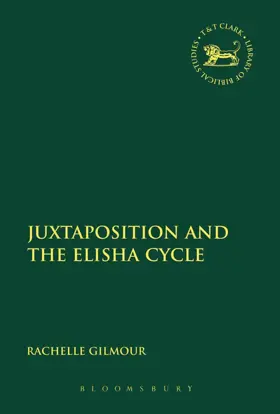

Juxtaposition and the Elisha Cycle
in Library of Hebrew Bible/Old Testament Studies
Pages
264
Publisher
T&T Clark
Published
5/21/2015
ISBN-13
9780567663726
This monograph examines the juxtaposition of narrative units in biblical narrative and the effect this has on interpretation. Early rabbinical and inner-biblical interpretations suggest that juxtaposition was an intentional device used by biblical editors and authors to shape the meaning of their material. Therefore, this monograph develops a framework for recognising the ways in which adjacent units interpret and re-interpret one another and presents this framework as an important hermeneutical tool. Stories and episodes that are linked chronologically affect one another through a relationship of causes and consequences. The categories of contradiction, corroboration and question and answer are also used to describe the types of interaction between narrative units and demonstrate how such dialogues create new meaning. Indicators in the text that guide the audience towards the intended interpretation are identified in order that a 'poetics' of juxtaposition is developed. The theoretical basis established in the first half of the monograph is then applied to the Elisha cycle. Each episode is interpreted independently and then read in juxtaposition with the surrounding episodes, producing a fresh literary reading of the cycle. Furthermore, in order to demonstrate how juxtaposition functioned as a diachronic process, attention is given to the literary history of the cycle. We conjecture earlier interpretations of the Elisha episodes and compare them to the final form of the cycle. Finally, the Elisha cycle is itself a story juxtaposed with other stories and so the same principles of interpretation are used to suggest the meaning of the cycle within the book of Kings.
- Table Of Contents
- Part A: Introduction to the Juxtaposition of Narrative
- 1. Introduction
- 2. Previous Approaches to Juxtaposition
- 3. Interpreting Juxtaposed Narrative Units
- 4. Keys to the Connection Between Episodes
- 5. Reading Juxtaposed Episodes: Chronological Continuity and Discontinuity
- Part B: Analysis of the Elisha Cycle
- 6. Introduction to the Elisha Cycle
- 7. Analysis of Episodes in the Elisha Cycle
- 1 Kings 19.19-21
- 2 Kings 2.1-18
- 2 Kings 2.19-22
- 2 Kings 2.23-25
- 2 Kings 3.1-3
- 2 Kings 3.4-27
- 2 Kings 4.1-7
- 2 Kings 4.8-37
- 2 Kings 4.38-41
- 2 Kings 4.42-44
- 2 Kings 5.1-27
- 2 Kings 6.1-7
- 2 Kings 6.8-23
- 2 Kings 6.24-7.20
- 2 Kings 8.1-6
- 2 Kings 8.7-15
- Elisha and the anointing of Jehu
- 2 Kings 13.14-19
- 2 Kings 13.20-21
- Part C: Conclusions on Juxtaposition and Biblical Narrative
- 8. Conclusions on Juxtaposition and Biblical Narrative
- Bibliography
- Index of References
- Index of Authors